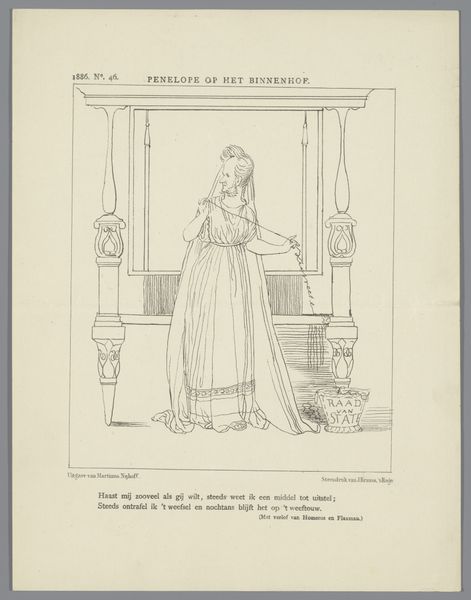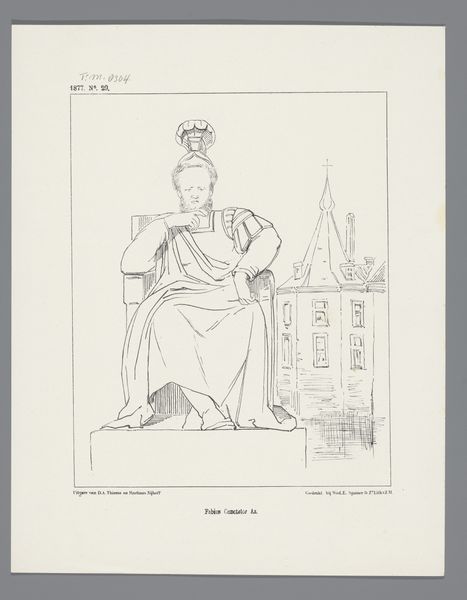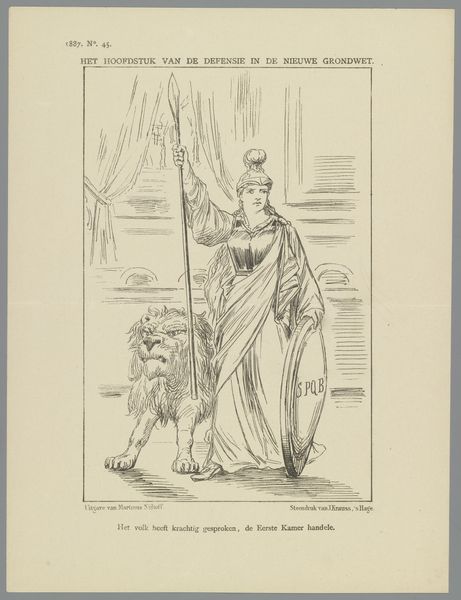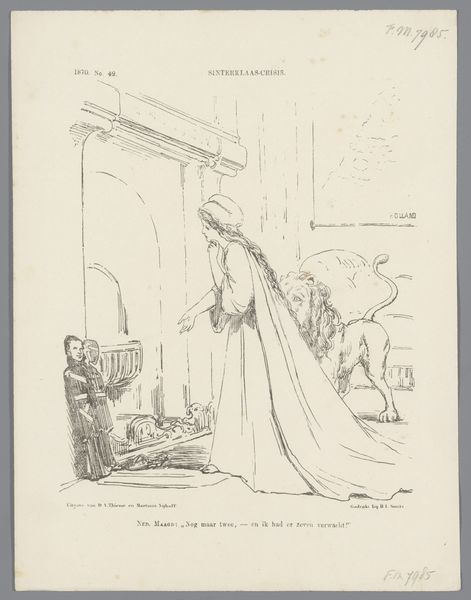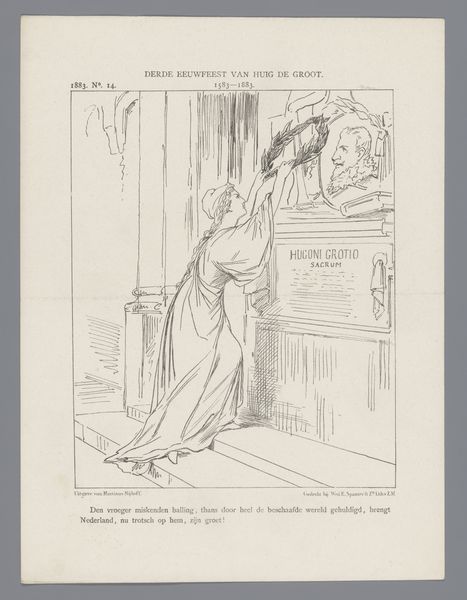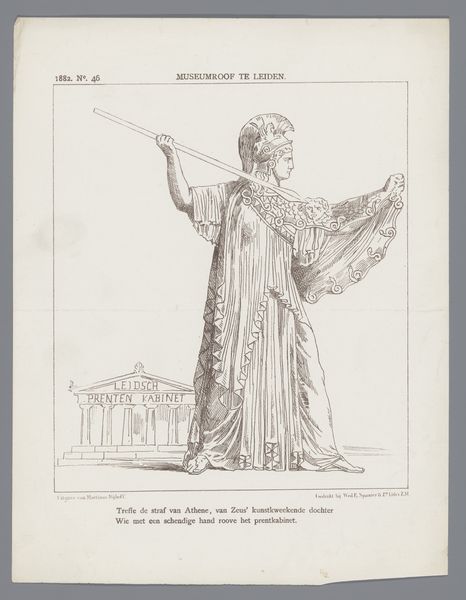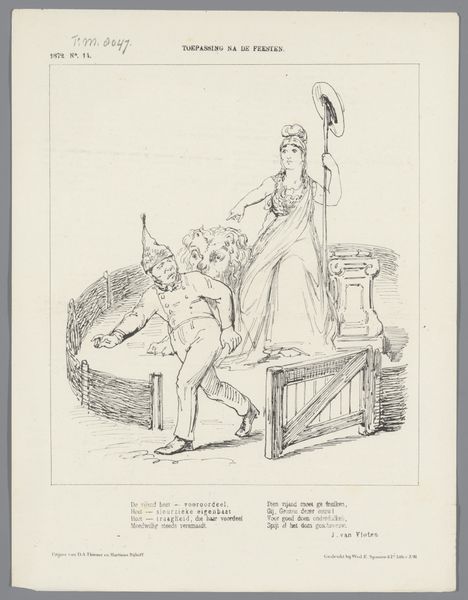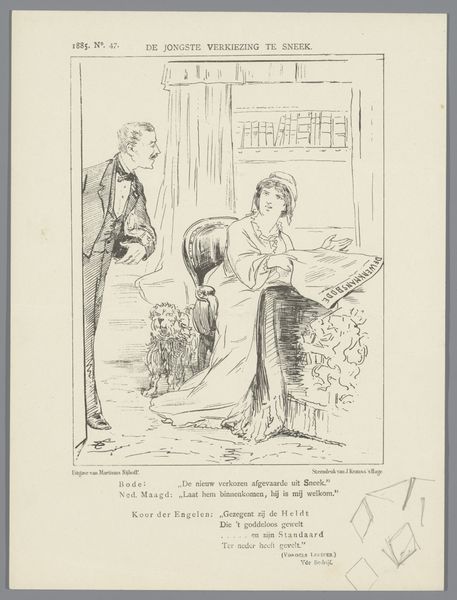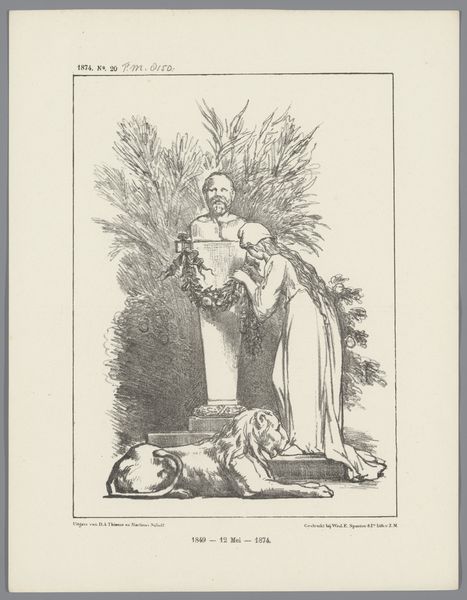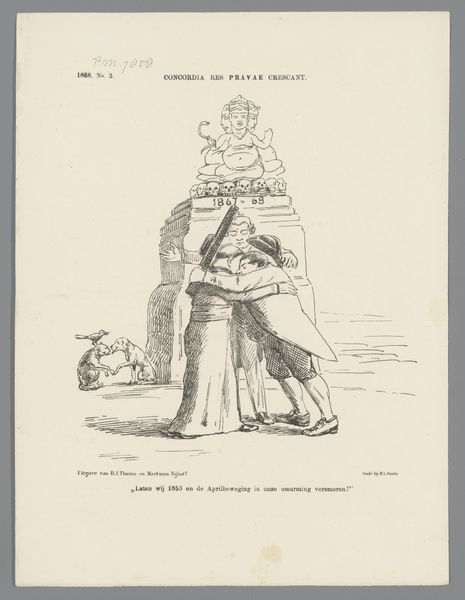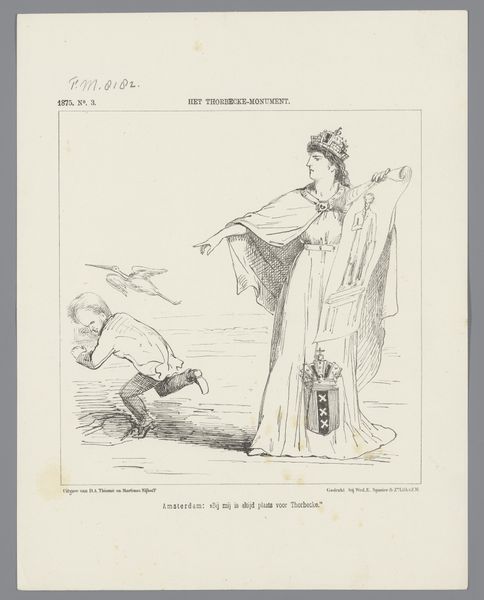
Spotprent bij het nieuwe wetboek van Strafrecht, 1 september 1886 1886
0:00
0:00
drawing, print, etching, pen
#
drawing
#
historical design
#
comic strip sketch
#
art-nouveau
#
dutch-golden-age
# print
#
etching
#
caricature
#
figuration
#
comic
#
line
#
pen
#
history-painting
#
realism
Dimensions: height 275 mm, width 215 mm
Copyright: Rijks Museum: Open Domain
Editor: Here we have "Spotprent bij het nieuwe wetboek van Strafrecht, 1 september 1886," a print created in 1886 by Johan Michaël Schmidt Crans. The piece feels like a political cartoon, a commentary on the new penal code, rendered in etching and pen. The figure of Justice seems…resigned. What’s your take on this work? Curator: The "resigned" Justice is a potent symbol. Consider the socio-political climate of 1886 Netherlands. This was a time of significant legal and social reform. How do you think the public might have received this image, given the transition to a new penal code? Editor: I imagine there would have been mixed feelings! It's a pretty direct visual commentary. So, the artist is reflecting how institutions such as government can be seen through their visual representations, here specifically commenting on legal shifts and public anxieties. Curator: Exactly! And think about how prints and drawings were circulated then. This wasn’t a painting hanging in a private collection. This was meant for the masses. What impact would a widely distributed image, like this one, have on shaping public perception of these new laws? What statements are being made? Editor: So the visual language—Justice herself, the scales—those were being used to sway public opinion on the fairness or harshness of the new legal code, distributed for maximum public access. That's clever. Curator: Indeed. And noticing that the text includes an almost poetic verse underneath it is just more direct social messaging and persuasive communication using visuals. What did you learn by examining the work within its social context? Editor: How political cartoons play a significant role in shaping the public discourse during periods of societal shift. Thanks for illuminating the historical dimensions of this print! Curator: My pleasure. Looking at art through this lens offers a deeper understanding of its power.
Comments
No comments
Be the first to comment and join the conversation on the ultimate creative platform.
